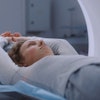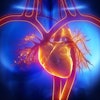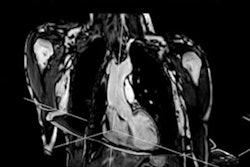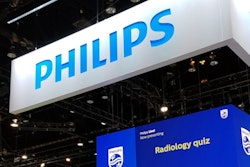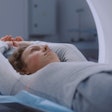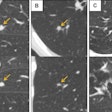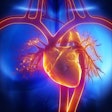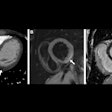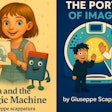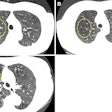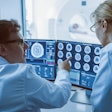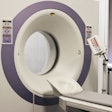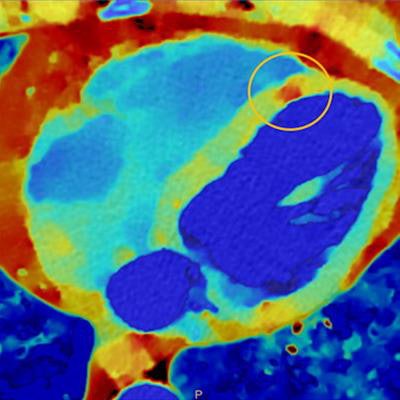
Philips Healthcare is continuing its investments in spectral CT with the launch of Spectral CT 7500, a new flagship CT scanner that's intended to make spectral imaging even easier to perform for routine daily use.
Spectral CT (also known as dual-energy CT) is designed to give radiologists additional information on potential pathology by scanning at two different x-ray energy levels. Users can then discern differences in tissue based on how they respond to the different types of energy beams.
But spectral CT historically has come with some drawbacks, such as radiation dose and workflow issues. Spectral CT 7500 is designed to address those issues, making spectral CT more appropriate for a wider range of clinical applications, according to Karim Boussebaa, business leader for CT and molecular imaging at Philips.
To develop Spectral CT 7500, Philips built on the IQon scanner, which first debuted at the RSNA 2014 meeting. A big difference is in the coverage of the two scanners -- Spectral CT 7500 acquires 8 cm of data per gantry rotation, compared with 4 cm on IQon. This eliminates the need to stitch images together and enables the new system to cover organs more comprehensively.
 Myocardial perfusion defects are difficult to visualize on conventional CT due to beam-hardening artifacts. Spectral CT results reduce beam-hardening artifacts, enabling easier visualization and quantification of perfusion defect. Image courtesy of Philips.
Myocardial perfusion defects are difficult to visualize on conventional CT due to beam-hardening artifacts. Spectral CT results reduce beam-hardening artifacts, enabling easier visualization and quantification of perfusion defect. Image courtesy of Philips.Philips also made workflow a major priority in designing Spectral CT 7500. Spectral scanning can now be expanded to all types of scanning conditions, ranging from pediatric patients to bariatric cases. The company has reduced by 68% the number of mouse clicks required to produce a spectral scan, Boussebaa said.
What's more, a new, faster patient couch enables the new system to scan more quickly, with chest or head scans completed in 1 second. The couch supports patient weights up to 306 kg (675 lb), a key feature for bariatric studies.
Philips has also addressed the radiation dose issue behind spectral CT. The scanner has an enhanced detector and imaging chain that allows single-pass image acquisition at 100 kVp, which is an optimal feature for scanning children and smaller patients. Philips scanners used to perform spectral scanning at 120 kVp.
"One low-dose acquisition will get you a full range of spectral scanning," Boussebaa said.
Indeed, Spectral CT 7500 is designed to be used in spectral mode for all clinical applications, including cardiology, oncology, neurology, and trauma. Philips believes that broader use of dual-energy imaging can produce cost savings by reducing follow-up tests that are needed to resolve inconclusive scans.
For example, a single-shot coronary CT angiography scan in spectral mode could rule out the need to send a patient on to a nuclear stress test or echocardiography, according to Boussebaa.
Philips is working with early clinical sites in the U.S. and Europe on Spectral CT 7500 right now, with commercial shipments expected in the summer of 2021; 510(k) clearance in the U.S. and the CE Mark in Europe have already been secured. The system will be the company's flagship superpremium scanner, with IQon remaining in the product line.
